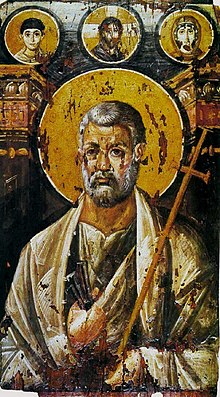Painting media
Painting media
Different types of paint are usually identified by the medium that the pigment is suspended or embedded in, which determines the general working characteristics of the paint, such as viscosity, miscibility, solubility, drying time, etc.
Hot wax or encaustic
Encaustic painting, also known as hot wax painting, involves using heated beeswax to which colored pigments are added. The liquid/paste is then applied to a surface—usually prepared wood, though canvas and other materials are often used. The simplest encaustic mixture can be made from adding pigments to beeswax, but there are several other recipes that can be used—some containing other types of waxes, damar resin, linseed oil, or other ingredients. Pure, powdered pigments can be purchased and used, though some mixtures use oil paints or other forms of pigment. Metal tools and special brushes can be used to shape the paint before it cools, or heated metal tools can be used to manipulate the wax once it has cooled onto the surface. Other materials can be encased or collaged into the surface, or layered, using the encaustic medium to adhere it to the surface.
The technique was the normal one for ancient Greek and Roman panel paintings, and remained in use in the Eastern Orthodox icon tradition.
You received this message because you are subscribed to the Google Groups "2top-manitotasy-3" group.
To unsubscribe from this group and stop receiving emails from it, send an email to 2top-manitotasy-3+unsubscribe@googlegroups.com.
To view this discussion on the web visit https://groups.google.com/d/msgid/2top-manitotasy-3/CADVsWigbSgZwDr4fvvuNU4LrvguQk1c_JMZyYOMjD-wbnzdX-g%40mail.gmail.com.

Comments
Post a Comment